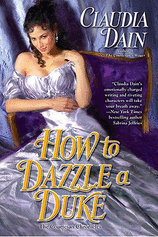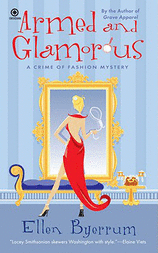Vonda N. McIntyre's
publications include the Nebula and Hugo award winning novel
Dreamsnake, which is based on the Nebula-winning story “Of Mist, and Grass, and Sand.”

Here she shares the tale of the genesis of
Starfarers, “the best SF TV series never made,” and the novels it spawned:
Starfarers didn’t start out as a novel quartet. It didn’t start out as a single novel, a short story, or prose.
It started out as a hoax.
Some years back, I was to be on a SF convention panel, “Science Fiction on Television.” This panel used to turn up at conventions with some regularity, and it always followed the same pattern: Somebody pulled out a list of all the SF television series of the recent past and read it aloud, inviting the audience to agree how terrible all the shows were. (Since then, things have changed, and some good SF has been on tv, but at that time aside from Twilight Zone and the original Star Trek, you had choices such as Time Tunnel and Lost in Space.)
This particular panel bores me to death, so, having promised to be on it, I had to do something different.
I had always thought the TV miniseries was the perfect form for SF — I wished Masterpiece Theater would produce one of our field’s classics — but at the time no one had tried it.
When the panelist next to me whipped out his list and started to read titles, to the audience’s groans, I let him get through a couple of lines before I raised an eyebrow.
“Hold on,” I said. “Haven’t you seen Starfarers? Hasn’t anybody seen Starfarers?”
Of course nobody had (because I made it up).
“It was a terrific miniseries. It was hard to find because CBS kept moving it around — isn’t that always what happens with good shows? It was about an O’Neill colony starship, a university town in space, preparing for its first research expedition. But there’s a political change, and the current administration decides the expedition should be cancelled and the starship turned into an orbiting spy station.
“So the faculty and staff of the starship do what any red-blooded space explorers would do.
“They steal the starship.”
I told the audience a little about the exploratory company:
J.D. Sauvage, alien contact specialist and long-distance swimmer, joining the alien contact team after a sojourn with a pod of killer whales and their genetically engineered human cousins, the divers (who live in Canada because they’re technically at war with the USA);
Victoria Fraser MacKenzie, Canadian physicist, inventor of the starship’s propulsion system, descendent of slaves who escaped via the Underground Railroad before the American Civil War;
 Satoshi Lono, geographer, web-savvy nightowl and Marathon runner;
Satoshi Lono, geographer, web-savvy nightowl and Marathon runner;
Stephen Thomas Gregory, geneticist, oversupplied with good looks and charm that mask his troubled family past.
Victoria, Satoshi, and Stephen Thomas are members of a family partnership, trying to recover from the loss of their fourth partner, Merit.
The story was part space adventure, part alien contact story, part family saga.
At the end of the panel, local filmmaker Ryan Johnson was about to set out on a quest for videotapes of the series. I had to confess that the series was a hoax, “the best SF TV series never made.” After a moment of disappointment, he said, “I’ll make you a trailer!”
And he did.
Several friends formed the Starfarers Fan Club, and we did a number of panels at sf conventions over the next couple of years. I fondly remember one in which the next panel was “Hollywood screenwriting,” and the panelists in the back of the room waiting for their panel to start were completely fooled by Ryan’s trailer, which was designed to look like it had been fortuitously snagged off a tv broadcast.
We always called Starfarers “the best SF TV series never made,” and the audience almost always failed to hear the “never made” part.
After a few panels, I realized it was a pretty good story and I wanted to write it, so I did. It ended up being a quartet, which I think of as one long novel that I couldn’t afford to write all at once: Starfarers, Transition, Metaphase, and Nautilus.
Over on the Book View Café blog, we were discussing casting possibilities, and the interesting idea came up of a vintage cast from 1940s movies. We kicked that around for a while.
It turned out to be impossible.
The problem with a vintage cast is that the faculty and staff of Starfarer is a diverse group. Satoshi is of Hawaiian and Japanese background, Victoria is Canadian. Stephen Thomas’ boss is the daughter of Cambodian refugees. J.D. has six biological and social parents, and Zev is from a family that has chosen genetic engineering to allow them to live in the sea. Stephen Thomas is one of the few people in the book who’s the default human being as far as movies are concerned: a white guy in his late twenties or early thirties. And even he isn’t quite “default,” not that you can tell by looking, because like most of the characters in Starfarers, Stephen Thomas chooses his lovers for other qualities than whether they’re of the opposite sex.
 One hopes that if a miniseries were ever made of Starfarers, the producers would honor the diversity of the people in it, and not claim (as happens far too often) that because they were color-blind with casting, it really wasn’t important or significant that everybody turned out to be white. That claim is just plain ridiculous.
One hopes that if a miniseries were ever made of Starfarers, the producers would honor the diversity of the people in it, and not claim (as happens far too often) that because they were color-blind with casting, it really wasn’t important or significant that everybody turned out to be white. That claim is just plain ridiculous.
Aside from a diverse cast of human characters, the quartet includes biomechanical creatures (the silver slugs and the artificial stupids) and aliens who are alien physically as well as culturally. None of the aliens is remotely human. One group vaguely resembles six-limbed meerkats. One being is the size of an island, and another is as delicate and insubstantial as vacuum.
And then there is Nemo, the squidmoth.
As J.D. thinks, at the end of Transition: Squidmoths?
Those folks are going to require some serious CGI.
So who would be my ideal (human, or mostly human) cast? When I wrote the novels and when we were doing the Starfarers panels, we had a cast in mind, but some of the actors are no longer in the business. The vintage cast was a no-go, and while it was tempting to try for a time-travelling 1960s cast (mainly because Peter O’Toole in his Lawrence of Arabia days would have been perfect as Stephen Thomas, and Peter O’Toole is in all my favorite movies, and Lawrence of Arabia is my candidate for the best movie ever made), I decided to go with contemporary actors.
Alien Contact Specialist J.D. Sauvage is Camryn Manheim. She can be funny or serious, sexy or reserved. You can believe her as a long-distance swimmer and as a person who could make friends even with alien intelligences.
For Victoria Fraser MacKenzie, I want Tracy Heggins. Heggins would be perfect for the sophisticated and politically savvy head of the Alien Contact Team. Victoria is a physicist, but she’s no girl geek. Heggins is stunning; she projects intelligence and strength. She can also be vulnerable — an important quality for Victoria, who is still grieving over the loss of the fourth member of her family partnership, Merit.
 For Stephen Thomas Gregory: Cillian Murphy. Stephen Thomas is the biologist of the team, preternaturally handsome, very smart, the newest partner and youngest of the family, the person knocked most off-center by the death of Merit, who proposed to him.
For Stephen Thomas Gregory: Cillian Murphy. Stephen Thomas is the biologist of the team, preternaturally handsome, very smart, the newest partner and youngest of the family, the person knocked most off-center by the death of Merit, who proposed to him.
And for Satoshi Lono, the geographer of the Alien Contact Team, and the person whose good sense, intelligence, passion, and love keeps the family partnership from dissolving?
George Takei, of course.
There may be some truth to the suggestion that the Starfarers group developed Satoshi for Takei, to give him a part to play where he got to do a good deal more than navigate a starship. And if Satoshi is some years older than the rest of the Alien Contact Team, older than the other members of the family partnership?
That’s OK.
George Takei is timeless.
The Starfarers Quartet debuted at
Book View Café on 20 December 2009. For more about Vonda N. McIntyre, please visit
her website.
--Marshal Zeringue
 she could get her hands on, especially adventure stories. She was reading and loving fantasy and science fiction back when she still thought kissing was icky. Then she grew up.
she could get her hands on, especially adventure stories. She was reading and loving fantasy and science fiction back when she still thought kissing was icky. Then she grew up.

















